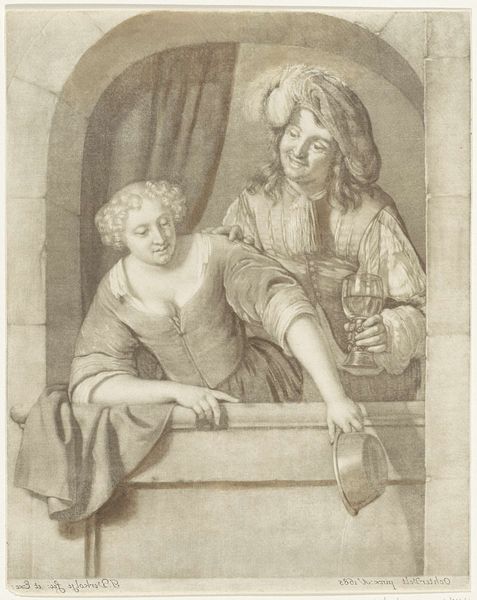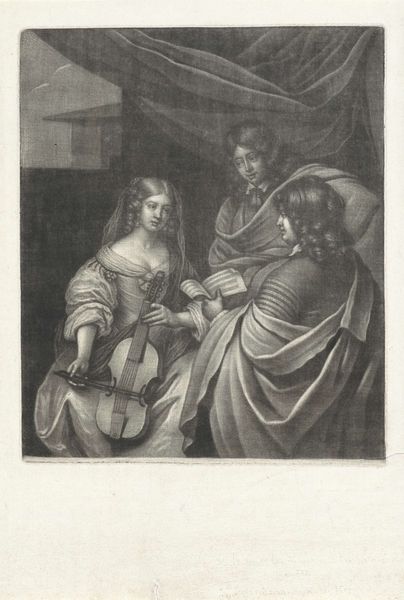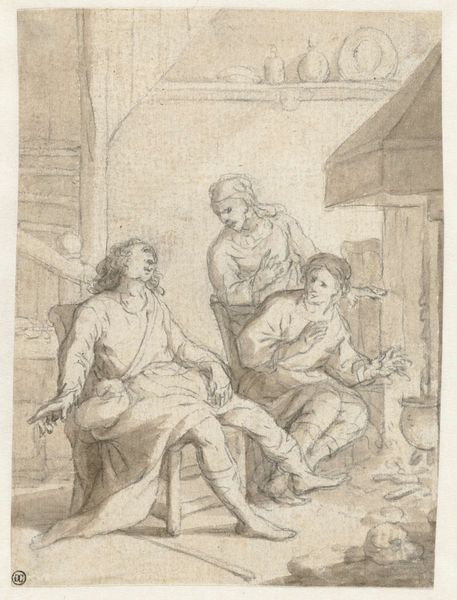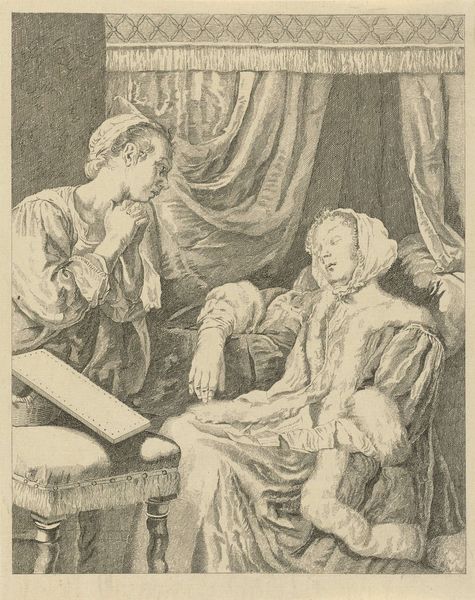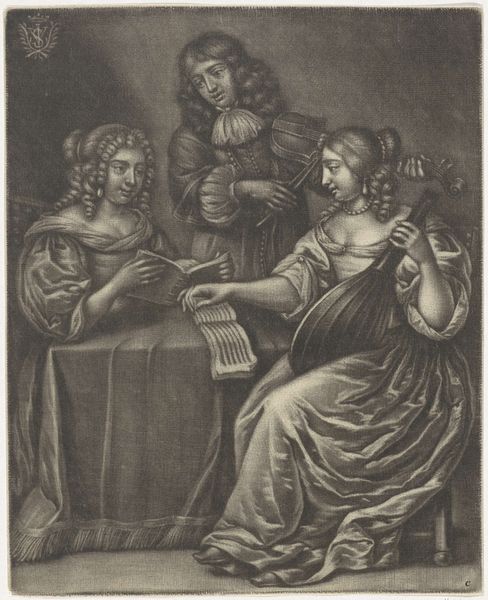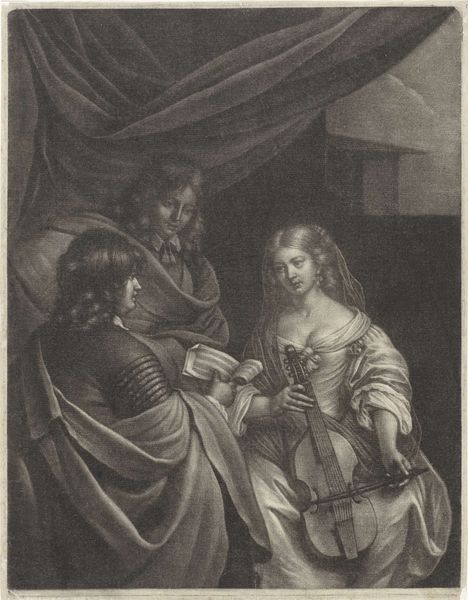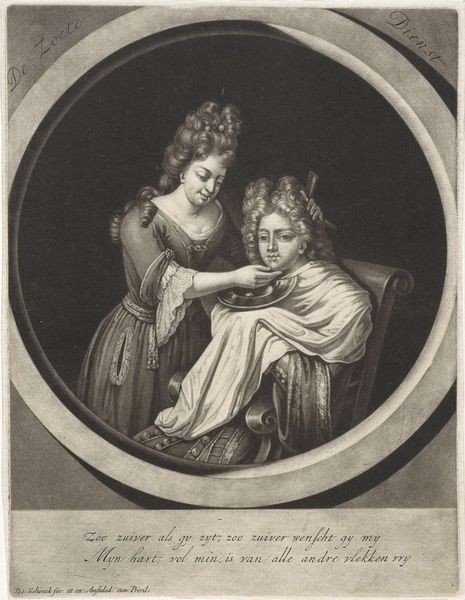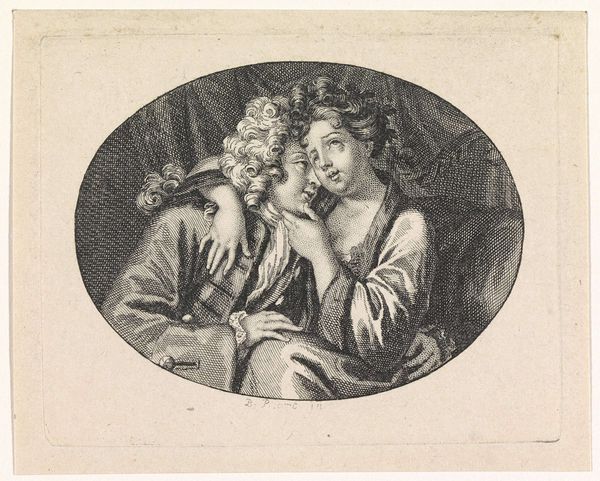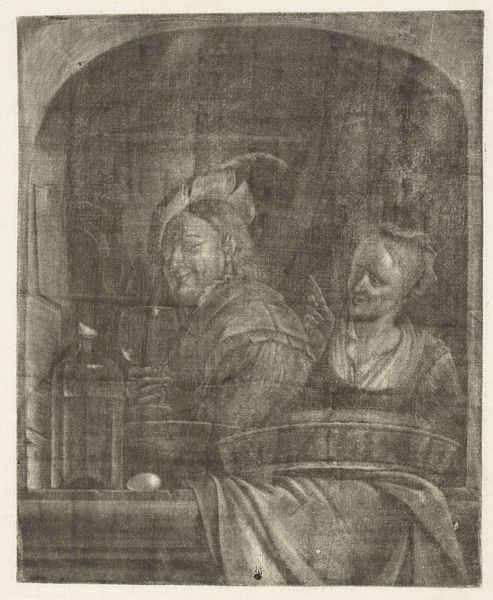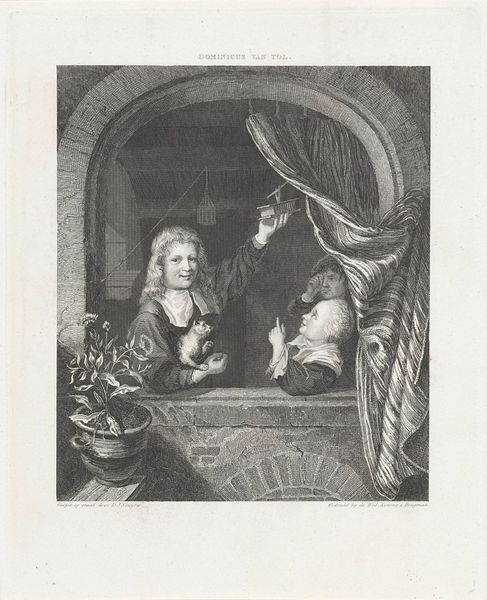
drawing, glass, pen
#
portrait
#
drawing
#
dutch-golden-age
#
charcoal drawing
#
glass
#
pen
#
portrait drawing
#
genre-painting
Dimensions: height 313 mm, width 251 mm
Copyright: Rijks Museum: Open Domain
Editor: This drawing by Jan Verkolje I, "Vrouw en man in een venster," dating from 1685-1693, depicts a woman and man in what seems to be a lighthearted moment at a window. It’s interesting, though, because the man appears much more engaged than the woman. What’s your interpretation of this piece, especially considering the historical context? Curator: The work presents a snapshot of Dutch Golden Age society, where genre painting flourished and often conveyed complex social messages. It's crucial to remember that such images weren't just neutral observations; they played a role in shaping social norms. The man's confident demeanor and the wine glass signal a certain status, while the woman's act of pouring liquid from the basin could be interpreted in different ways. How do you think the public would have received it, say, compared to a formal portrait? Editor: Well, portraits conveyed status and wealth, right? This scene seems more… relatable? Like a slice of everyday life, though perhaps a scandalous one. Curator: Exactly! That's key. These "slice of life" images normalized certain behaviors and expectations. It prompts a question: Does the artist celebrate or critique this scene? Is this intended to be a charming genre scene or is Verkolje subtly commenting on male privilege and perhaps, even feminine duty, in Dutch society? Editor: I never really thought about art as social commentary so directly. It definitely gives you a whole new perspective! It is a window to understanding the cultural assumptions. Curator: Precisely! It allows us to analyze how power dynamics, gender roles and prevailing ideologies of the Dutch Golden Age shaped the very fabric of artistic representation. Analyzing through the lens of historical and cultural influences truly enriches our understanding and reminds us that art rarely exists in a vacuum.
Comments
No comments
Be the first to comment and join the conversation on the ultimate creative platform.

